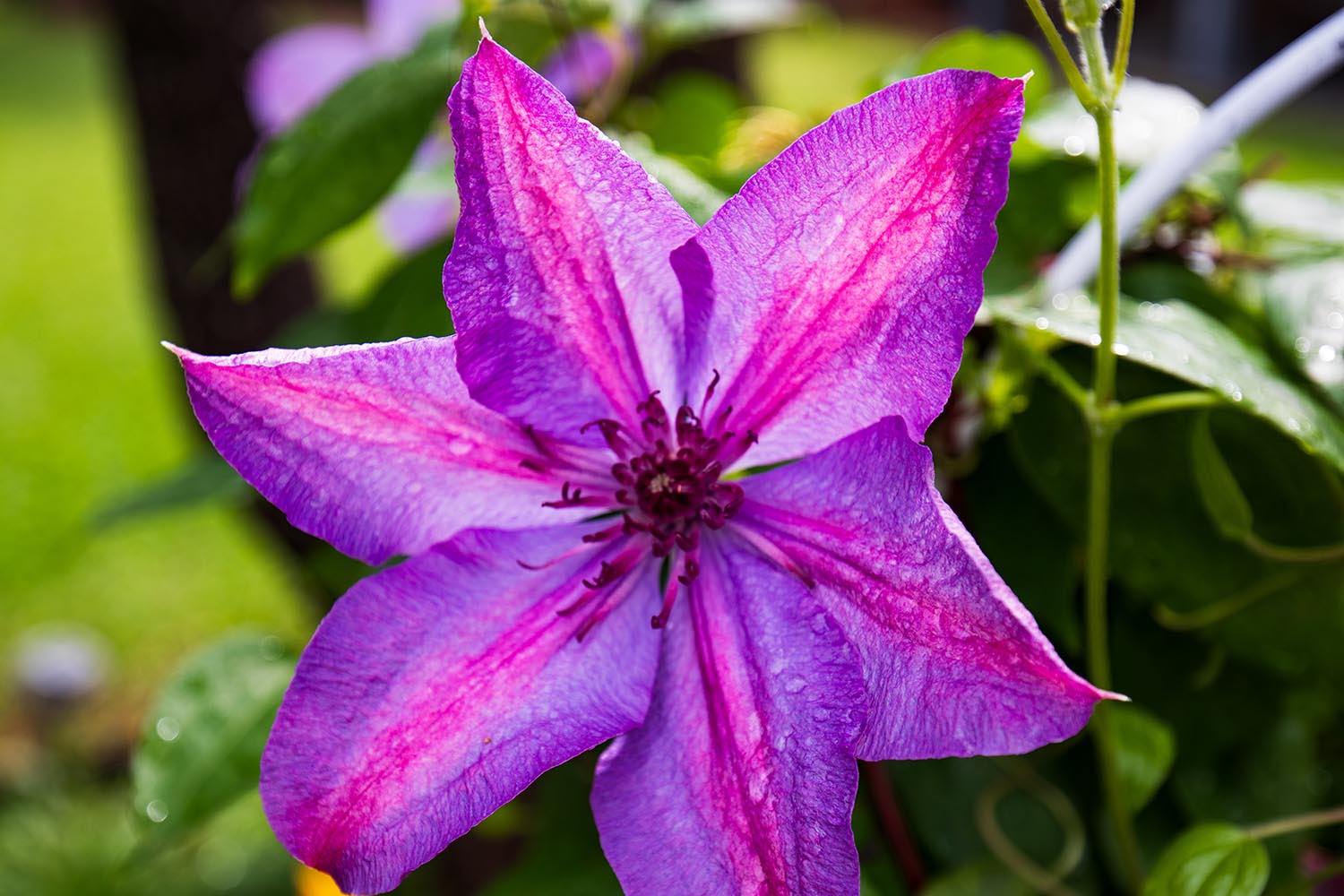By MIKE RALEY WPTF Weekend Gardener
I must say that I have rarely written an article about a plant I like but I don’t recommend for WPTF Weekend Gardener listeners. Sweet Autumn Clematis (Clematis teriflira) or Japanese Clematis is an exception. Sweet Autumn Clematis is actually in the Buttercup family. It does not act like one however. It is a master at spreading and surviving once its roots are established. It is very invasive and NC State doesn’t recommend that you plant this vine. The North Carolina Invasive Plant Council feels the same way. I don’t even know where you can buy this plant now. It is purported to be poisonous too. That being said, when I see it blooming in my yard and especially along the roadside in late August into September, I know fall is on the way and I love fall and winter.
The folks at NC State describe it as a weedy, twining vine. You can easily dig some up and attach it to a sturdy fence or trellis and it is a snap to pull out of the ground if you want to control it. This vine can spread 20 to 30 feet per year. In the wild it can cling to anything and will then block out any sunlight to other plants.
I do love Sweet Autumn Clematis because my mother adored it. It reminds me of her and my Nashville home. So Melissa and I started a cutting from Nashville on our mailbox post here in Wake County decades ago when we were not as schooled in gardening as we profess to be now. It quickly took over the mailbox and about five feet in three directions. Plus, now it’s not getting as much sun as it used to. So, we pulled it up and tried to control it along. We are not getting proper use out of it on the ground, nevertheless, I am not getting rid of it.
If you want the best looking Sweet Autumn Clematis in your neighborhood, find a sunny spot for your support structure. It will grow well in part shade, at least afternoon shade. The Sweet Autumn Clematis could probably use 2 or 3 inches of hardwood mulch to keep the roots cool. Plant it where there is good drainage too. As we always say, dig a hole twice as wide as your root ball and probably even with the ground surface, keeping in mind it will grow anyway.
If you don’t pull it up you need to prune it after flowering and cutting it hard in late fall will help prevent it from spreading seeds. Again, I do trim it every year.
I have never seen any disease problems with my Sweet Autumn Clematis. NC State horticulturists say aphids, powdery mildew may affect this plant. I’ve never heard of deer messing with it. Anne Clapp used to say deer will eat anything when they’re hungry.
Of course, it is up to you as to whether you want to deal with the Sweet Autumn Clematis. It’s a keepsake for me and I like the fragrance of the flowers, However it can obviously be a liability. So, you make your choice as you are riding through a rural area in September and marveling at the beauty of this vine. Just don’t stop by the side of the road and get out for an inspection. It may swallow you up before you can blink!




